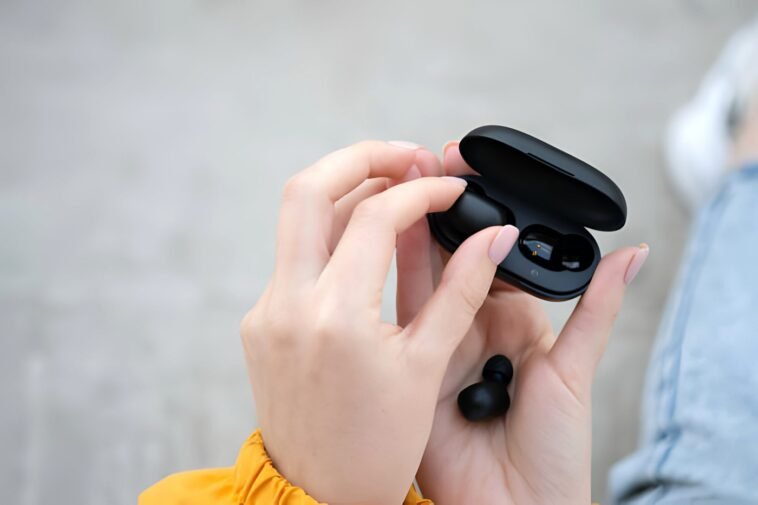Earbuds, also known as in-ear headphones, have become an integral part of our daily lives, offering a portable and immersive audio experience. Whether you’re a music enthusiast, a gamer, or someone who values convenience and comfort, choosing the right earbuds requires careful consideration of various factors. In this comprehensive guide, we’ll explore seven essential things you should consider before buying a new earbud.
1. Sound Quality and Features
Table of Contents
The sound quality of earbuds is a crucial aspect that directly impacts your listening experience. Look for earbuds that offer high-fidelity audio with clear highs, deep bass, and well-balanced midrange tones. Features like active noise cancellation (ANC) can significantly enhance your listening by blocking out external noise, making them ideal for noisy environments or travel.
Additionally, consider other features such as ambient mode, which allows you to hear your surroundings while wearing the earbuds, and customizable EQ settings to tailor the sound profile to your preferences. Some earbuds also come with built-in equalizer apps that let you fine-tune the audio to suit different music genres or audio content.
2. Comfort and Fit
Comfort and fit are paramount, especially if you plan to wear your earbuds for extended periods. Look for earbuds with ergonomic designs and multiple ear tip sizes to ensure a secure and comfortable fit. The ear tips should create a tight seal in your ear canal, not only for comfort but also to enhance sound isolation and prevent sound leakage.
Consider the material of the ear tips as well. Memory foam ear tips can provide a more customized and comfortable fit compared to silicone tips. Some earbuds also come with wingtips or ear hooks for added stability during physical activities like running or working out.
3. Battery Life and Charging
Evaluate the battery life of the earbuds and their charging case. Longer battery life ensures uninterrupted listening sessions without frequent recharging. Look for earbuds with quick charging capabilities that offer several hours of playback with just a few minutes of charging. This feature can be particularly useful when you’re on the go and need a quick battery boost.
Consider the charging options as well. Wireless charging cases offer convenience, allowing you to charge your earbuds without dealing with cables. Some earbuds also support fast charging technologies like USB-C or Lightning connectors, providing rapid charging speeds for both the earbuds and the charging case.
4. Connectivity Options
The connectivity options of earbuds play a significant role in their usability and compatibility with your devices. Most modern earbuds use Bluetooth technology for wireless connectivity, but it’s essential to check the Bluetooth version and range. Bluetooth 5.0 or higher offers improved connection stability, lower latency, and longer range compared to older versions.
Ensure that the earbuds are compatible with your devices, whether it’s a smartphone, tablet, laptop, or smartwatch. Look for earbuds that support multipoint pairing, allowing you to connect to multiple devices simultaneously. This feature is handy if you switch between devices frequently or share your earbuds with others.
5. Brand Reputation and Customer Reviews
Researching the brand reputation and reading customer reviews can provide valuable insights into the performance, reliability, and customer satisfaction of earbuds. Established brands often have a track record of producing high-quality products with excellent customer support and warranty services.
Pay attention to reviews that highlight aspects such as sound quality, comfort, battery life, connectivity, durability, and after-sales service. Look for common issues or praises mentioned by multiple users to get a comprehensive understanding of the earbuds’ strengths and weaknesses.
6. Price and Budget Considerations
Set a budget range based on your requirements and preferences. While premium earbuds may offer advanced features and superior sound quality, there are also budget-friendly options that provide decent performance at a lower price point. Compare the features, performance, and pricing of different earbud models to find the best value for your investment.
Keep an eye out for promotions, discounts, or bundle deals that may be available from retailers or directly from the manufacturer. Consider factors such as warranty coverage, return policies, and additional accessories included with the earbuds when assessing their overall value.
7. Durability and Warranty
Check the build quality and durability of the earbuds, especially if you lead an active lifestyle or use them in challenging environments. Look for earbuds with water and sweat resistance ratings, durable materials such as aluminum or reinforced plastics, and secure cable management to prevent wear and tear over time.
Warranty coverage is also essential for peace of mind. Most earbuds come with a standard warranty period that covers manufacturing defects and malfunctions. Some brands offer extended warranty options or protection plans for added coverage against accidental damage or loss.
Conclusion
Choosing the right earbuds involves considering multiple factors, such as sound quality, comfort, fit, battery life, connectivity, brand reputation, pricing, durability, and warranty coverage.
By evaluating these aspects based on your preferences, usage scenarios, and budget, you can find earbuds that deliver an exceptional audio experience tailored to your needs.
FAQs
How do I know which earbud size is right for me?
Start with the smallest ear tips and test them for a secure fit and comfort. Gradually try larger sizes until you find the one that creates a tight seal without discomfort.
Are earbuds with ANC worth the extra cost?
Earbuds with active noise cancellation (ANC) can be worth the extra cost if you frequently use them in noisy environments like airplanes, trains, or busy streets, as ANC can significantly reduce background noise.
Can I use earbuds for making calls?
Yes, many earbuds come with built-in microphones and support for hands-free calling. Look for earbuds with clear voice pickup and noise-canceling microphones for optimal call quality.
What is the difference between earbuds and headphones?
Earbuds are small, compact audio devices that fit directly into the ear canal, while headphones are larger over-ear or on-ear devices that cover the entire ear. Earbuds offer portability and are ideal for active use, while headphones may provide better sound isolation and comfort for extended listening sessions.
How do I extend the battery life of my earbuds?
To extend the battery life of your earbuds, avoid overcharging them, use the appropriate charging accessories, keep them clean and dry, and store them in a cool, dry place when not in use.




